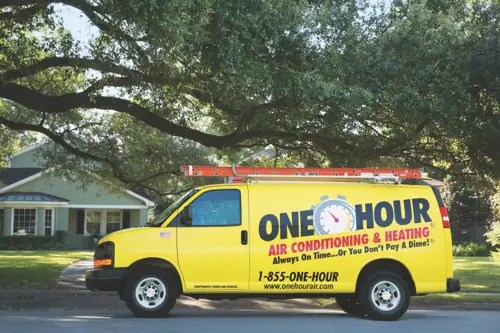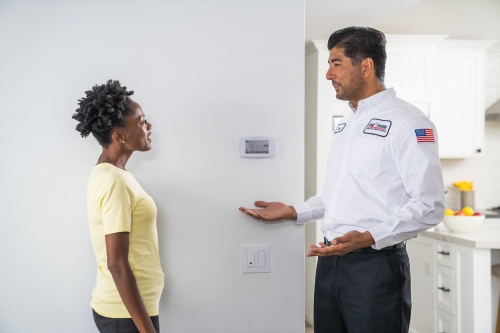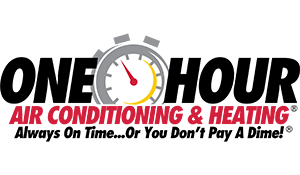Finding Your Perfect Heat Pump Temperature (And Why It Matters)
Setting the right temperature for your heat pump can feel a bit like finding the perfect Goldilocks zone not too hot, not too cold, but just right. As a homeowner, ensuring that your living space remains comfortable while keeping energy bills under control is often at the top of my mind.
But what exactly is the “ideal” temperature for a heat pump, and does it vary based on the time of year or geographical location?
This guide aims to unravel the details surrounding heat pump settings, helping you achieve comfort and efficiency with ease. By the end of this piece, you’ll have actionable tips for keeping your home cozy in the winter and cool in the summer all while optimizing your energy usage.
Heat Pumps 101: A Refreshing Alternative to Traditional HVAC
Before we dial into temperature specifics, it’s worth noting what makes heat pumps stand out. Unlike a traditional furnace or air conditioner, a heat pump doesn’t generate heated or cooled air from scratch. Instead, it transfers heat from one place to another, working as both a heater in winter and an air conditioner in summer.
This makes it highly efficient, especially in climates where temperatures don’t get excessively extreme. Why does this matter? Because the way heat pumps function impacts how you should set their temperatures to maximize their performance and lifespan.
Summer Settings: Finding the Sweet Spot
When the mercury starts to rise, a heat pump becomes your go to for delivering cool, refreshing air throughout your home. But where should you set your thermostat for peak summer performance?
According to energy experts, the ideal cooling temperature is 78°F when you’re home during the summer.
Here’s why this number makes sense:
- Comfortable yet efficient: 78°F strikes a balance between keeping your home cool without overburdening the system.
- Energy savings: For every degree you raise your thermostat above 72°F, you can cut cooling costs by about 3%. Over a summer, those savings can certainly add up.
Not home for the day? Raising the setting to around 85°F while you’re out and lowering it back to 78°F just before you return can reduce strain on your heat pump and conserve energy. This is where a smart thermostat shines set it and forget it scheduling takes the guesswork out of the equation.
If 78°F still leaves you feeling a bit too warm, try small changes in your routine first. Use ceiling fans to circulate air, and close blinds or curtains during the hottest parts of the day to block out solar heat. This way, your heat pump doesn’t need to work overtime.
Winter Settings: Staying Warm Without Breaking the Bank
Winter poses a different challenge than summer. Unlike cooling, heating can consume significantly more energy. This is why your thermostat settings in colder months should be carefully chosen to maintain comfort while controlling costs.
During the winter, the optimal heat pump temperature is typically around 68°F while you’re at home and awake.
Here’s why this is recommended:
- Energy efficiency: Heat pumps work best when you push them less. Setting the thermostat to 68°F allows the system to work within its capacity without overexertion.
- Health and Comfort: 68°F is generally regarded as the lower limit for comfort during the day for most individuals.
When you head to bed, consider lowering it further to 60–64°F, which not only promotes better sleep but also saves energy. When the house is empty, such as working hours, dialing it down to the mid-50s is completely reasonable. Just don’t lower it too far, your heat pump will expend extra energy trying to bring your home back to a comfortable temperature later, negating the savings.
Never turn your heat pump completely off in the winter. Restarting it from scratch requires more energy, and in freezing conditions, it could risk damage to the system.
Factors That Affect Ideal Heat Pump Temperatures
Of course, not every home is the same, and no single “ideal” temperature suits every situation. The following factors should influence your settings.
Insulation Quality
If your home has poor insulation, it will lose heat (or cool air) faster, forcing the heat pump to work harder to maintain the temperature. Upgrading your insulation in areas like attics or around windows can allow you to keep your heat pump thermostat lower in winter and higher in summer while maintaining comfort.
Climate
Geographical location plays an enormous role. Homes in warmer climates may not need the same rigorous heating performance during the winter, while homeowners in colder regions might need supplemental heating when temperatures drop below 30°F.
Personal Comfort
Some people feel comfortable at 70°F, while others might prefer 65°F. Test different settings over a week or two to find the balance that suits everyone in your household.
Tips For Getting the Most Out of Your Heat Pump
To reap the benefits of your heat pump, here’s how you can optimize its performance year-round:
Clean or Replace Filters Regularly
Dirty filters can choke airflow, forcing the system to work harder. Aim to clean or replace filters every one to three months depending on usage.
Use “Auto” Mode Strategically
Many homeowners aren’t fully familiar with their heat pump’s settings. “Heat” and “Cool” modes are straightforward, but “Auto” mode allows your system to switch between heating and cooling as needed. This can be helpful if temperatures fluctuate in your area.
Don’t Rely on Emergency Heat Settings
The “emergency heat” function on a heat pump is typically meant for extreme cold or system malfunctions. This mode uses much more energy, so avoid it unless necessary.
Invest in a Smart Thermostat
If you haven’t already, a smart thermostat is a game-changer for heat pump efficiency. Pre-program temperature schedules based on routines, and enjoy the added benefit of remote adjustments while you’re away.
Schedule Routine Maintenance
Having your unit inspected annually by a technician ensures it runs efficiently. Small issues like calibration errors or dirty coils can escalate into costly problems if ignored.
Small Changes, Big Savings
Getting the temperature just right on your heat pump doesn’t mean reinventing the wheel. Stick to tried-and-tested temperature settings 78°F in the summer, 68°F in the winter and focus on optimizing other parts of your home for efficiency.
Think of your heat pump as a partner that works with your home. With a little intentional care, you can enjoy year-round comfort while keeping energy costs manageable.
